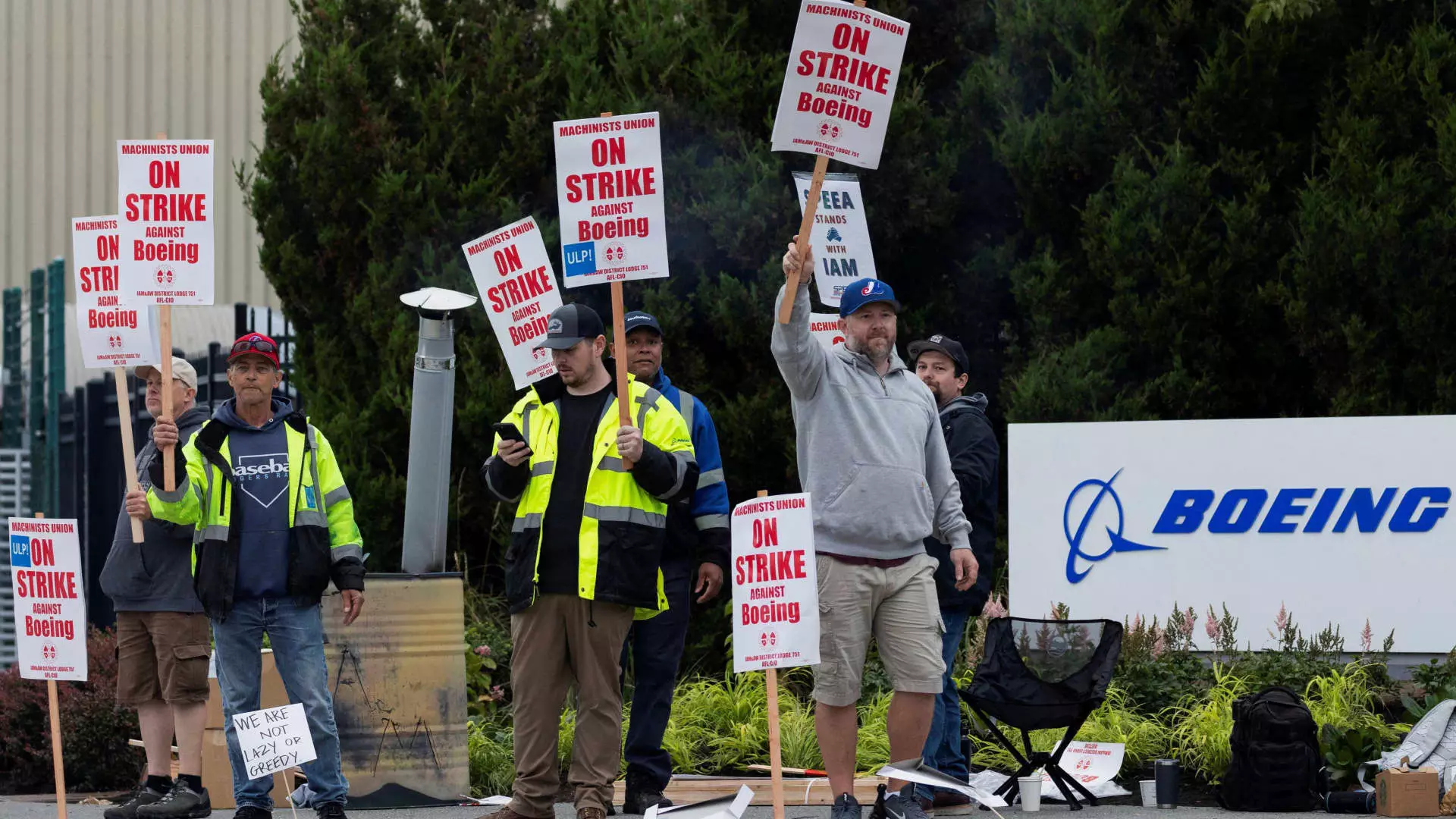Boeing, a cornerstone of the American aerospace industry, is grappling with significant internal and external pressures as it faces a machinist strike that has now entered its second week. The implications of this industrial action stretch beyond the immediate circumstances of workers demanding better pay; they reflect broader issues surrounding job security, the cost of living, and the health of a company that has long been considered a titan of the skies. With a staggering $60 billion in debt and no profits since 2018, Boeing finds itself at a crossroads that could dictate the future of both the company and its workforce.
Employees walked away from their jobs on September 13, voting overwhelmingly against a tentative labor deal that they felt fell short of their demands. As a result, over 30,000 machinists now find themselves on the picket line, fueled by frustration over stagnant wages against the backdrop of skyrocketing living expenses, particularly in the Seattle area. The most recent statistics reveal that median home prices in Washington have surged 142% over the past decade, intensifying the financial strain on workers whose salaries do not reflect these rising costs.
As these machinists stand united, many have begun exploring additional employment opportunities—turning to side jobs in landscaping, delivery services, and other labor-intensive sectors. Their actions underscore a prevailing sentiment that while they take pride in their craftsmanship at Boeing, the financial demands placed upon them are becoming untenable. Workers like Jake Meyer, who plans to drive for a food delivery service during the strike, encapsulate this duality: a commitment to high-quality manufacturing juxtaposed against the harsh realities of economic survival.
The financial toll of the strike on Boeing has been described in somber terms. With estimates suggesting that the work stoppage costs the company approximately $50 million daily, the urgency for both parties to arrive at a resolution is palpable. Yet, as earnings continue to plummet, and production rates dwindle, the conversation between company management and union leaders seems embroiled in a cycle of disappointment and stalled negotiations. Union representatives made it clear that the desire for a pay increase of around 40%—contrasted with Boeing’s proposal of 25%—is a reflection of a workforce that feels undervalued.
The strike has significant ramifications not merely for Boeing’s immediate operations but also for a vast network of suppliers who rely upon the jet manufacturer for their livelihoods. With halted shipments and workers being forced out of production roles, the repercussions could linger long into the future, creating challenges for a company that was already struggling to rebound from past crises. Furthermore, the continuing fallout from earlier manufacturing malfunctions, like the recent incident involving the 737 Max, casts a long shadow on Boeing’s production capabilities.
As temporary furloughs loom for tens of thousands of Boeing staff, including executives, the company’s financial landscape grows increasingly precarious. The consequences extend beyond just financial woes; they pose substantial concerns about Boeing’s ability to recruit and retain skilled workers in an economy where such talent is becoming increasingly scarce. Analysts warn that should the strike prolong, it could lead to a downward spiral for Boeing, making it even more challenging to recover once the clouds of labor strife clear.
This labor conflict at Boeing does not exist in isolation; it is part of a larger trend of workers across various industries seeking fair compensation and better working conditions. Recent strikes across diverse sectors, including airlines and automotive plants, amplify a collective consciousness calling for justice and respect in the workplace. The Biden administration, recognizing the potential ramifications of this particular strike, has urged both Boeing and the machinists’ union to re-engage in constructive dialogue and reach an agreement.
The ongoing negotiations between Boeing’s management and the International Association of Machinists and Aerospace Workers reflect a battle of wills. On one side is a newly appointed CEO trying to navigate a company with significant financial hurdles, and on the other, a resolute workforce that seeks to reclaim its dignity and reasonable standard of living. With the clock ticking and benefits set to expire, the stakes have never been higher for both sides.
The Boeing machinists’ strike represents more than just a labor dispute; it highlights a pivotal moment in the relationship between corporate America and its employees. As the situation unfolds, it stands as a testament to the challenges that lie ahead—not just for Boeing, but for the entire aerospace industry and its workers who are eager to build the future in the skies.

